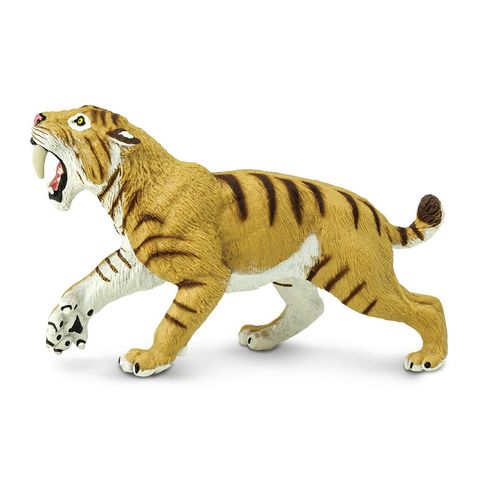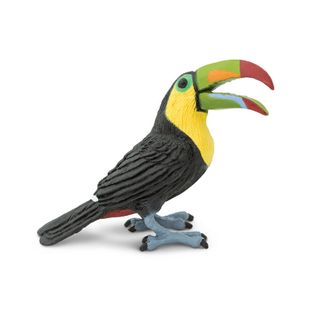
Safari Ltd Smilodon Ws Prehistoric World
Description
Smilodon is better known as the sabre-toothed cat. This large muscular feline had massive dagger-like fangs and is well known from thousands of skeletons excavated from the Rancho La Brea tar pits of California. Smilodon hunted for prey in North and South America before it became extinct about 12 thousand years ago.
- Scientific Name: Smilodon fatalis
- Characteristics: Smilodon was a strong meat-eating cat best known for its long curved canine teeth. It had longer front legs than hind legs, and had a short tail. It had sharp claws on its hands and feet, and reached 6.5 feet long, about the size of a modern lion.
- Size and Color: This figure is 4 inches long and 3 inches high. It has yellow fur with black stripes like some modern large cats.
- The Smilodon is part of the Wild Safari® Prehistoric World collection
- All of our products are Non-toxic and BPA free
History
Smilodon was first named scientifically in 1842 by the Danish scientist Peter Wilhelm Lund, who spent much of his life studying prehistoric mammal fossils in South America. However, Smilodon is best known from the tar pits of Rancho La Brea, California, which were studied by American paleontologists from 1913 onwards.
The natural seeps of heavy oil at Rancho La Brea formed deep lakes, which were covered with twigs and leaves during the Pleistocene. This treacherous surface trapped unsuspecting animals such as elephants and horses. These struggling mammals attracted predators, including Smilodon fatalis, which found themselves trapped as well. As a result, thousands of Smilodon skeletons have been found preserved in the tar pits.
Smilodon is not a tiger, as is sometimes assumed, and it isn’t the only sabre-toothed cat. However, it is the best known and largest of its kind. The large canine teeth mean that Smilodon needed a very wide gape for an effective bite. This was made possible by a modified jaw joint. The knife-like canine teeth of Smilodon are actually rather blunt, so they probably were not used for puncturing skin to kill prey swiftly. Instead, they likely used the teeth to grasp loose skin and slowly tear out a chunk of flesh. The Smilodon could then wait patiently for its hapless prey to bleed to death from the wound. Its short legs also suggest that it was an ambush hunter, rather than actively chasing down its prey.
- Recommended Age: 3+
- Size in cm: 10 L x
- Size in inches: 3.94 L x
- UPC: 095866279721









